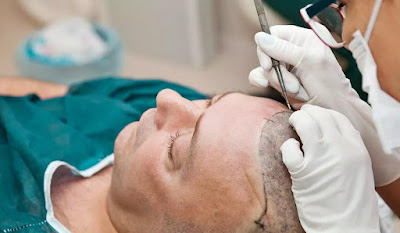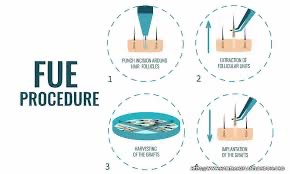Hair Care: Choosing the right Hair Type Implant for You
Choosing the Ideal Hair Transplant for You: A Manual to Get Your Confidence Back
For both men and women, the experience of hair loss can be devastating. The good news is that due to significant advances in hair implant technology in recent years, there are now many options available to help you regain your confidence. Choosing the best type of hair implant can seem daunting, but this guide will provide you with the knowledge you need to make an educated choice.
Recognizing the different hair transplant types:
1. Follicular Unit Transplantation (FUT):
This is the traditional method of hair transplantation, in which the donor area scalp strip is cut into individual Follicular units (FU), each containing one to four hairs. After that, these FUs are transferred to the receiving area.
Benefits:
FUT delivers more follicles per treatment, making it the best option for severe hair loss.
Cons:
If you have short hair, you will be able to see the linear scar left on the donor area.
1. FUE, or Follicular Unit Extraction:
Using a micro-punch, individual Follicular units are extracted from the donor area as part of this minimally invasive procedure. The recipient area is then transplanted with these extracted FUs.
Benefits:
FUE is a more aesthetically pleasing option because it does not leave a linear scar.
Cons:
FUE may not be suitable for very large areas of hair loss and may be slower and more expensive than FUT.
1. Direct Hair Implantation (DHI):
DHI is a newer method that extracts and implants Follicular units simultaneously using a special Choi implanter pen. By treating the hair follicles and reducing damage, this technique can accelerate the growth rate.
Benefits:
DHI reduces scarring, speeds up healing time and potentially provides a faster rate of hair growth.
Cons:
DHI requires a highly skilled surgeon and is a more expensive procedure.
Things to keep in mind before choosing hair transplant:
Type and severity of hair loss: Certain techniques work better for different patterns of hair loss
The amount of hair loss is influenced by many factors, such as:
1. Hair loss ratio:
Mild: Hair loss is less than 25%. This is obvious and can be hidden with hairstyles.
Moderate: 25-50% hair loss. It may be more obvious, especially in the hairline and crown areas.
Severe: Hair loss exceeds 50%. This can have a negative impact on appearance and can be challenging to conceal.
2. Hair Fall Pattern:
Diffuse: General thinning of scalp hair.
Patchy: Baldness in irregular or circular patches. Same is the case with Alopecia Areata.
Receding hairline: Thinning of the hair on the top of the head, often associated with female pattern baldness, is known as crown thinning.
Crown thinning: A common symptom of female pattern baldness, thinning of the hair on the top of the head.
⦁Talk to a hair transplant specialist for specific advice
Goal: Think about the density and organic look you want to achieve.
Budget: The cost of hair transplant varies depending on the method, surgeon's experience, and region.
Donor area: How many follicles are available for transplantation depends on the quantity and quality of hair in your donor area.
Recovery time: Take into account your personal preferences and availability of time off from work.
Additional advice:
⦁ Find a trustworthy hair transplant surgeon by doing the following: Look for surgeons who have received extensive training in the particular technique you are interested in and who are board-certified.
⦁ Inquire all details and be aware of the advantages and disadvantages of each procedure.
⦁ Get several consultations so you can evaluate different surgeons and choose the one you are most comfortable with.
⦁ Be reasonable in what you hope to achieve: The full effect of a hair transplant may not be seen for up to a year.
⦁ Keep in mind that choosing the ideal hair implants is an investment in your self-assurance. You can restore your hair and get natural-looking results by doing research and choosing a skilled surgeon.


